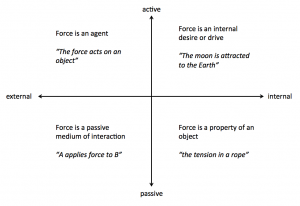
Oceanographic concepts and language, reloaded
How we might misunderstand our students and therefore diagnose misconceptions where there are none.
Imagine you are in an Earth Sciences class and your teacher talks about glaciers and how they are “retreating”. They probably also show you pictures comparing a very old photograph from, say, 1900, with a current photo of the same glacier. What you see is that where used to be ice, ice and nothing but ice, now there is likely only a little left somewhere up high on a mountain, and that the whole plain in the foreground that used to be covered in ice is now bare rock. I’m sure we’ve all sat in that class at some point.
Now consider the everyday usage of the term “retreat”: When we talk about a retreat, we talk about movement away from a place or situation especially because it is dangerous, unpleasant, etc.. So what a student who hasn’t thought about glaciers much before associates, is the poor glacier crawling back up the mountain to safety.
This is a pretty easy misunderstanding to clear up. If you think about it, there is no mechanism that would drive enormous amounts of ice up a mountain, and the other explanation, that the backward melting at the front of the glacier is faster than the forward motion of the glacier itself, is a lot more plausible.
This was one of the examples I used to set the scene for my recent talk at FIE in Madrid. Our paper on “misalignment of everyday and technical language” is basically a summary of my earlier posts on this blog on oceanography and language (see below), where we talk about a couple of cases where everyday and technical language are misaligned, and to what kind of problems that can lead.
But there are other misunderstandings that are a lot more persistent and harder to even diagnose. I recently read the paper “”Force”, ontology, and language” by Brookes and Etkina (2009). I found it a really difficult read, but a very worthwhile one.
What I’m taking away from it:
When physicists talk about force, they typically do so in a very short-hand kind of way. As they talk among themselves, this is not a problem because the meaning of the shorthand has been negotiated and even though people might not be aware that they are talking in metaphores, everybody is aware of the underlying meaning of what is being said.
The authors now span the space of physicists’ language along two axes: role and location. This leads to four quadrants in which they can place recorded physicists’ language about forces (see figure below):
- active & internal: Force is an internal desire or drive. Example: “the moon is attracted to the Earth”.
- active & external: Force is an agent. Example: “The force acts on an object”.
- passive & external: Force is a passive medium of interaction. Example: “A applies force to B“
- passive & internal: Force is a property of an object. Example: “the tension in a rope”

My rendition of Brookes & Etkina (2009)’s Figure 1: The dimensions of physicists’ language about force.
Looking at those examples (and there are more in the paper, so go read the original rather than my take on it!) it is clear that in the way we speak about force, we do assign properties, at least by the way we are using language about it, if not intentionally.
The authors come up with a model of language in physics and do a very careful analysis of what this means for different case studies, but the very compelling message that I am taking away from this is:
What we might conceive as misconceptions on the student’s part might very well be just a miscommunication because, taking all the grammatical clues I am giving through my language, the student understands what I am saying differently from what I think I am saying. Being aware of this might help us answer the questions the students are asking, rather than the ones we are hearing. Which, in turn, will make it easier for them to understand what we think we are saying. So let as close with a quote of the final two sentences of the paper: “If learning physics involves learning to represent physics, then learning physics must involve a refinement of terminology and cases in language. And part of the teacher’s role in the classroom must be to support that learning process—something that we, as teachers, are often unaware of.”